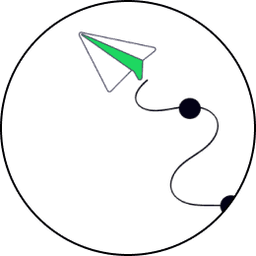Large language models, explained with a minimum of math and jargon [ELI5 Summary]
Blog Article: https://www.understandingai.org/p/large-language-models-explained-with
Authors: TIMOTHY B LEE AND SEAN TROTT
Introduction
Introduction of ChatGPT: Last fall, a tool called ChatGPT was introduced. It's a type of Large Language Model (LLM), a big brain for computers that helps them understand and generate human-like text. This was a big deal in the tech world, but most people didn't really know about LLMs or how powerful they could be.
Popularity and Understanding of LLMs: Now, lots of people have heard about LLMs and many have even used them. But, understanding how they work is still a mystery for most. They know that LLMs are trained to "predict the next word" in a sentence and need a lot of text data to do this, but the details are often unclear.
How LLMs are Different: Unlike traditional software that's built by humans giving step-by-step instructions to computers, LLMs like ChatGPT are built on something called a neural network. This network learns from billions of words in ordinary language. Because of this, even the experts don't fully understand how LLMs work on the inside.
The Goal of the Article: The article aims to explain what we do know about how LLMs work, in a way that's easy for everyone to understand, without using technical jargon or complex math.
What the Article Will Cover: The article will explain how LLMs represent and understand language using something called word vectors. It will also talk about the transformer, a basic component of systems like ChatGPT. Lastly, it will explain how these models are trained and why they need so much data to work well.



![Latent Space Podcast 8/16/23 [Summary] - The Mathematics of Training LLMs — with Quentin Anthony of Eleuther AI](/_next/image?url=https%3A%2F%2Fwww.datocms-assets.com%2F101962%2F1692324088-screenshot-2023-08-17-at-9-59-17-pm.png&w=3840&q=75)

![Latent Space Podcast 8/10/23 [Summary]: LLMs Everywhere: Running 70B models in browsers and iPhones using MLC — with Tianqi Chen of CMU / OctoML](/_next/image?url=https%3A%2F%2Fwww.datocms-assets.com%2F101962%2F1691894611-screenshot-2023-08-12-at-10-42-43-pm.png&w=3840&q=75)
![Latent Space Podcast 8/4/23 [Summary] Latent Space x AI Breakdown crossover pod!](/_next/image?url=https%3A%2F%2Fwww.datocms-assets.com%2F101962%2F1691539617-screenshot-2023-08-08-at-8-02-52-pm.png&w=3840&q=75)
![Latent Space Podcast 7/26/23 [Summary] FlashAttention 2: making Transformers 800% faster - Tri Dao of Together AI](/_next/image?url=https%3A%2F%2Fwww.datocms-assets.com%2F101962%2F1691543194-screenshot-2023-08-08-at-8-43-59-pm.png&w=3840&q=75)
